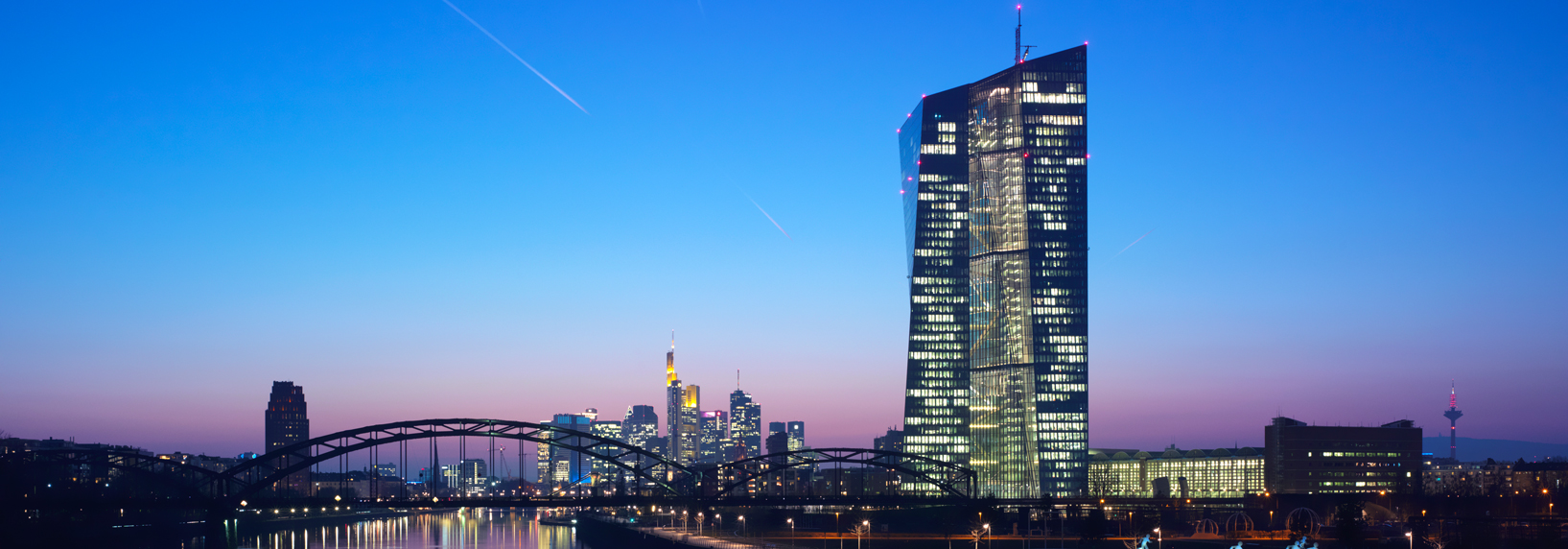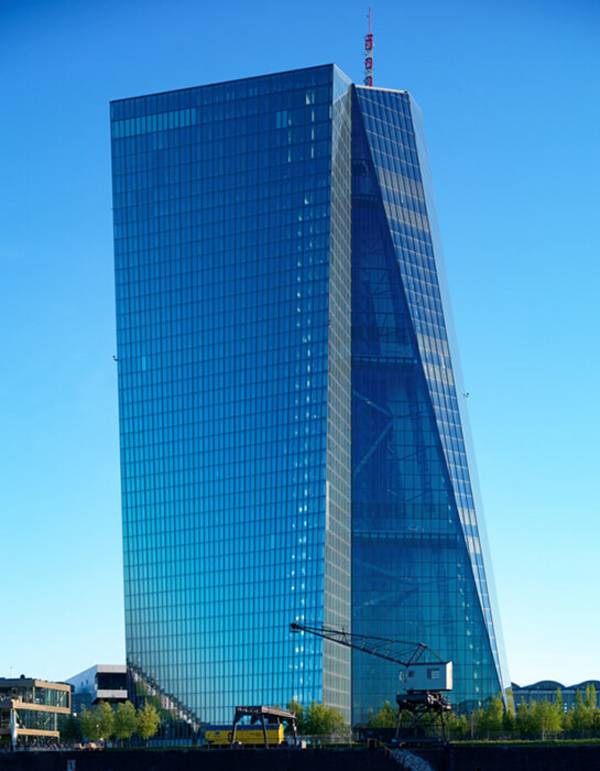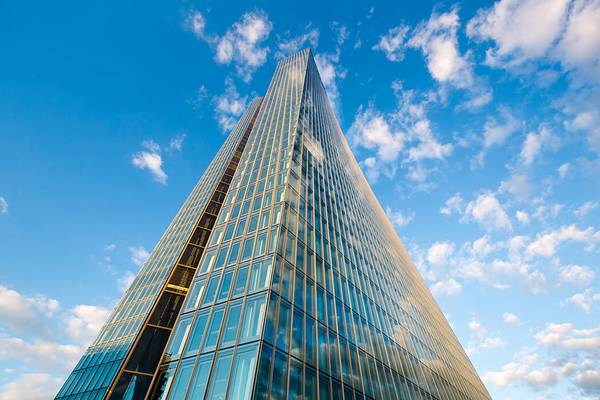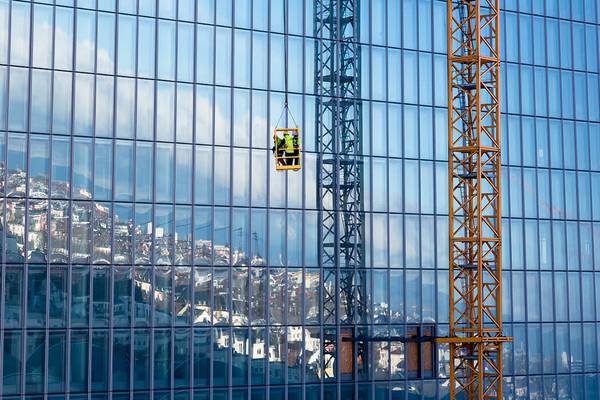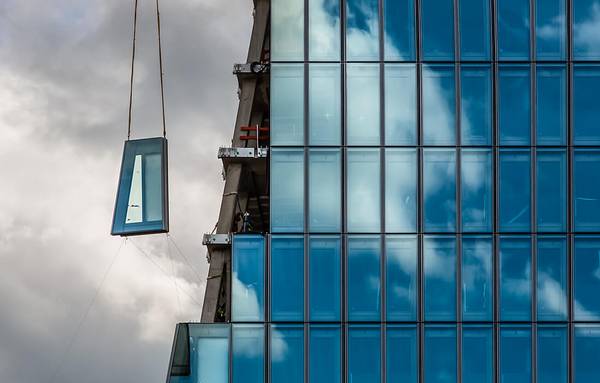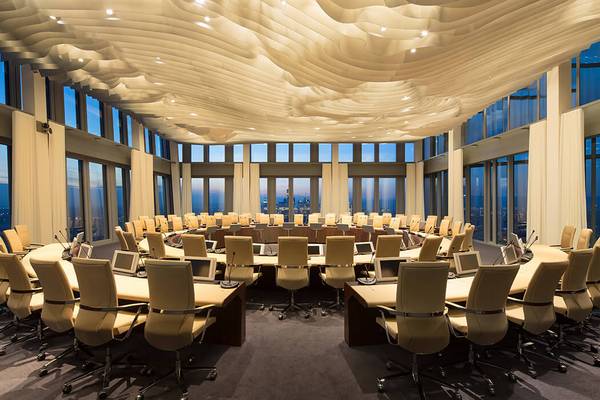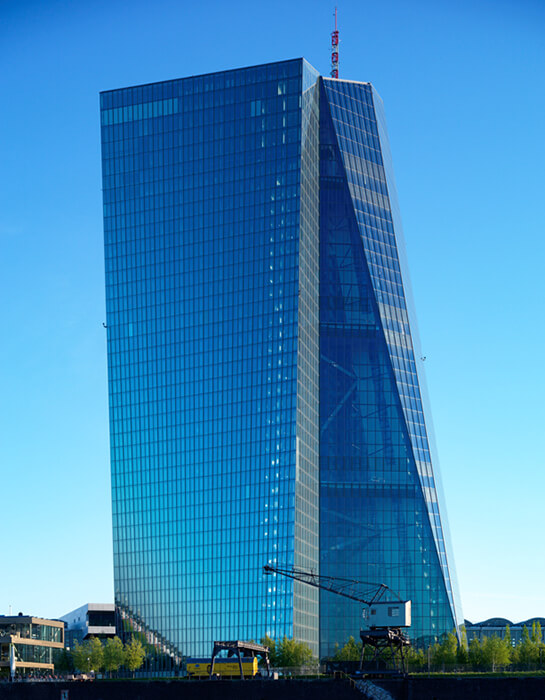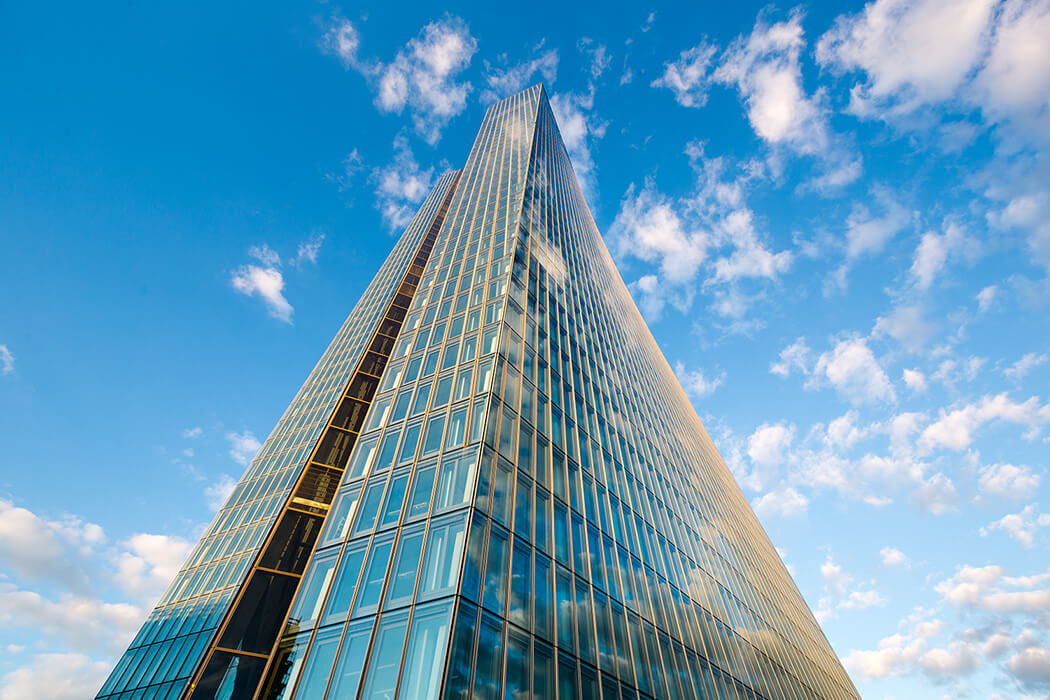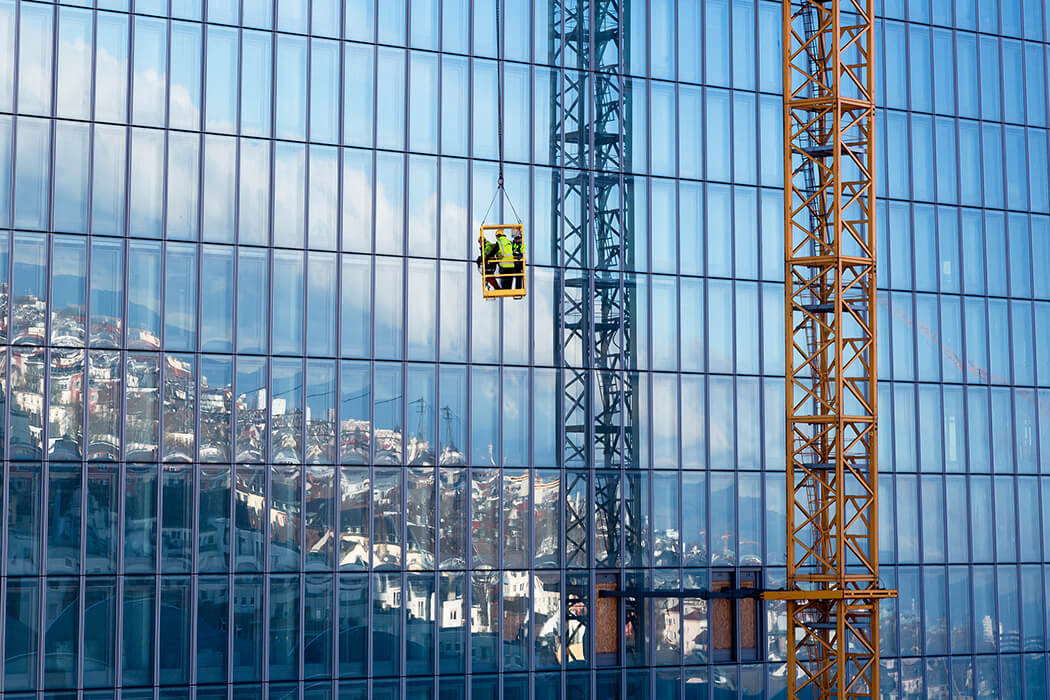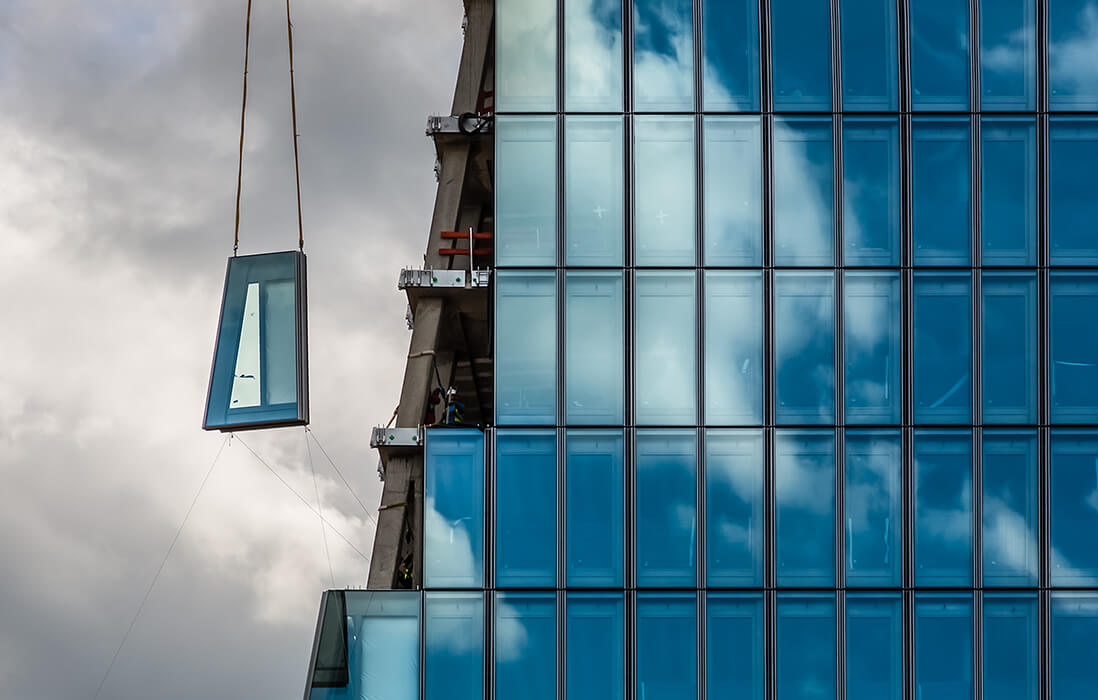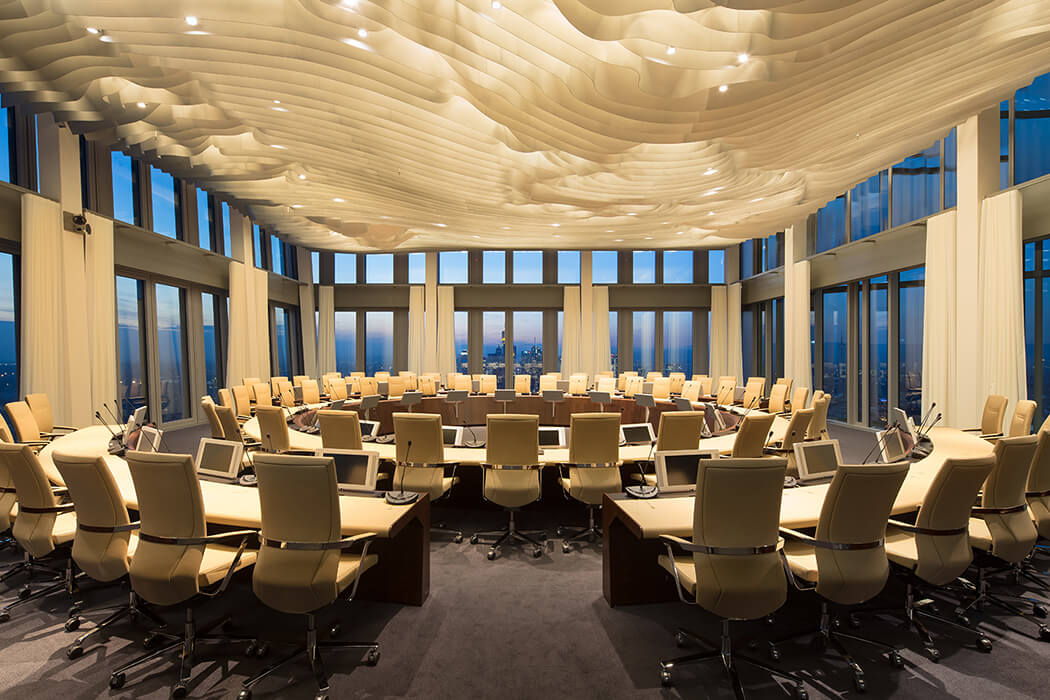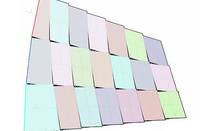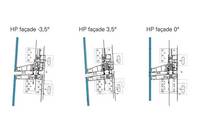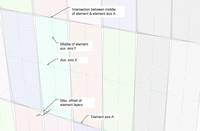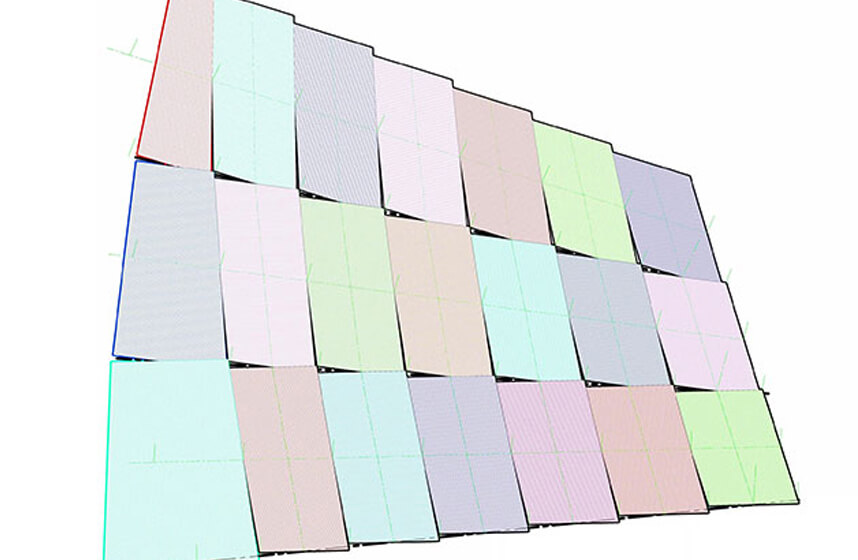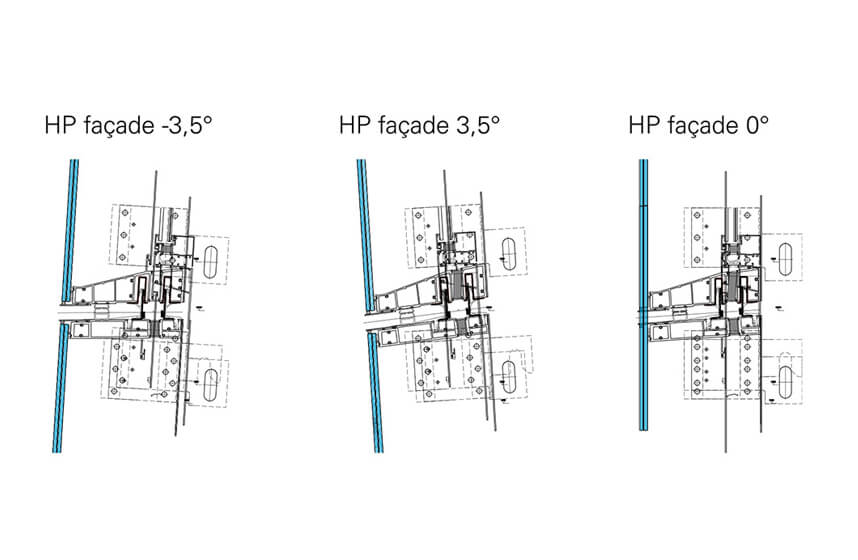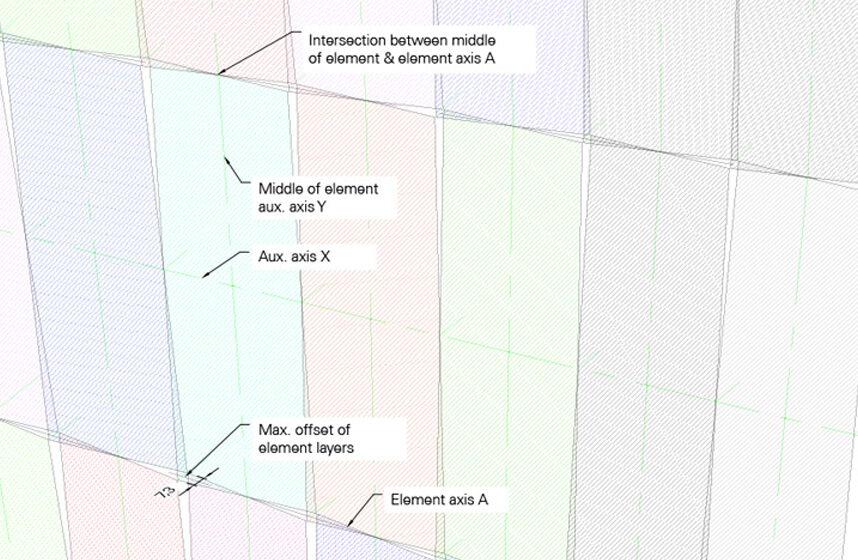Shading against sunlight and glare is incorporated in the cavity. This energy-efficient façade is part of the overall energy concept. One of the outcomes of the arrangement of the twin office towers was sloping, hyperbolic façade surfaces requiring many different elements. A total of 6,081 individual elements were needed for the total area of about 34,000sqm. Despite the individual symmetry of the façade elements, seele developed a system that enabled serial production and reduced the complexity. It was then possible, for example, to use data from the 3D design directly to programme and control the machining centres used to fabricate the elements.
Reference overview: © Robert Metsch, Header image: © Ulrich Wozniak
